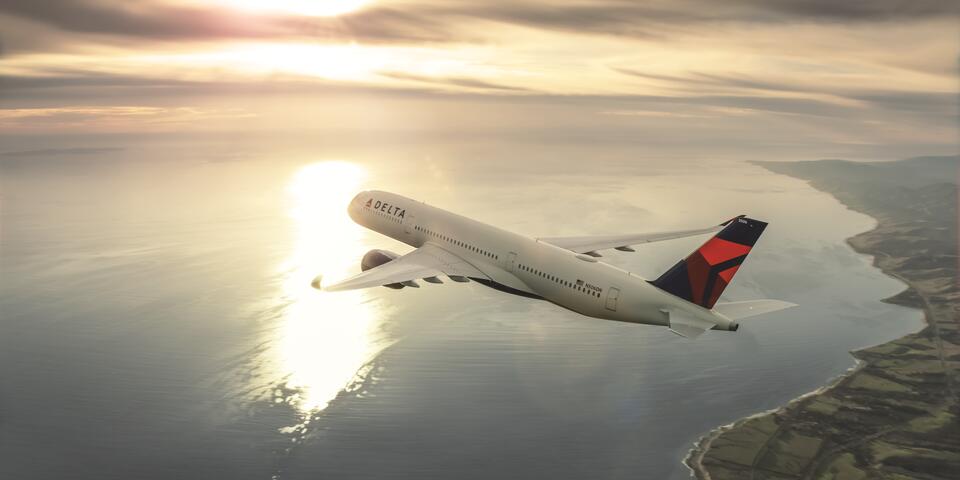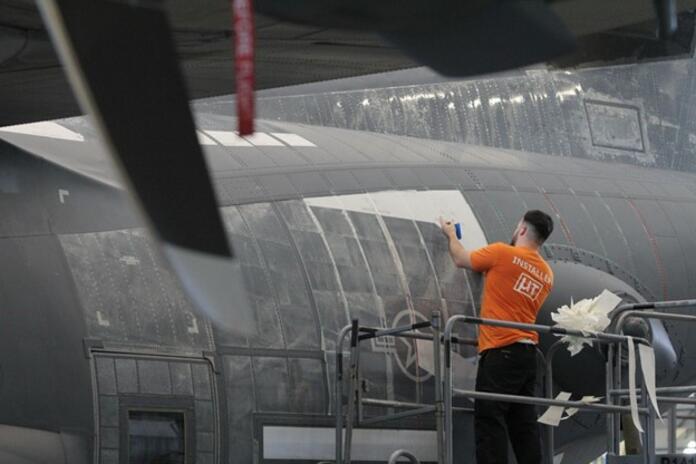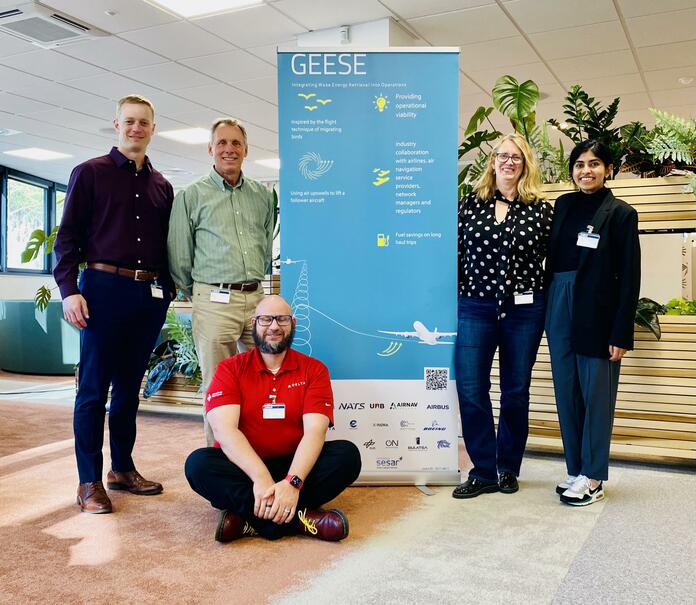From the ocean to the sky: How Delta is learning from nature to drive fuel efficiency
From Airbus’ fello’fly technique which takes inspiration from migrating geese to MicroTau’s ‘shark skin’ addition to planes – the airline industry continues to look to nature for innovation inspiration.

Delta Air Lines is adding a new partner to its Sustainable Skies Lab that is driving fuel efficiencies inspired by an unlikely source: sharks. MicroTau is an Australian aerospace technology company developing a ‘Riblet Modification Package’ that mimics shark skin to drive drag reduction.
Delta will begin testing MicroTau’s “shark skin” riblets on the Boeing 767 fleet. This “shark skin” technology can be applied to an aircraft’s fuselage, wings and tail, and once applied, can improve fuel efficiency by up to 4%, according to MicroTau’s estimations.
Despite their smooth appearance, the skin of sharks is covered in a layer of microscopic grooves called dermal denticles, which help a shark swim more efficiently and expend less energy. Applying these microscopic grooves, often called riblets, to the exterior of an aircraft can reduce drag by smoothing air flow, which helps reduce fuel consumption.
Delta’s Sustainable Skies Lab is an innovation incubator, partnering with disruptors Delta believes will help revolutionize how the industry flies more sustainably. Since its 2023 inception, the Lab is comprised of a number of partnerships, including Airbus, Boeing, JetZero and Joby Aviation.
“Delta’s Sustainable Skies Lab bridges the gap between ideas and proven innovation by accelerating research, design and testing for a more sustainable future of air travel,” said Sustainable Skies Director, Sangita Sharma. “Collaborating with innovative partners lets us explore both changes that can be implemented in the near-term, and longer-term initiatives that will revolutionize how we think about flying for years to come.”
Every year, Delta’s Sustainable Skies Lab welcomes new partners capable of helping Delta make changes within its control today to save on jet fuel and reduce carbon emissions, while innovating with others on revolutionary aircraft of the future.
INSPIRATION FROM NATURE
From Airbus’ fello’fly technique which takes inspiration from migrating geese to MicroTau’s ‘shark skin’ addition to planes – the airline industry continues to look to nature for innovation inspiration.
Another example is finlets. Finlets are fins, similar to the ones fish have, that can be installed on the back of an aircraft on the fuselage to reshape airflow and reduce drag, ultimately leading to reduced fuel consumption and carbon emissions. Delta has been working with Vortex Control Technologies (VCT) to install and test finlets on select aircraft in Delta’s 737 fleet. The science behind finlets is similar to winglets – which Delta has added to all existing fleets that can be modified – in that when they are added, they can reduce drag by minimizing the effects of vortices that form in specific regions around the aircraft.
With approximately 90% of Delta’s carbon emissions coming from jet fuel each year, every decision and modification can drive fuel savings that add up, and these decisions are indicative of Delta’s commitment to make changes within its control on existing fleet, while also purchasing next-gen fleet that’s more fuel-efficient and supporting research into aircraft that will help Delta reach its decarbonization goals.
Read more about Delta’s sustainability and decarbonization work:
© 2025 Delta Air Lines, Inc.


